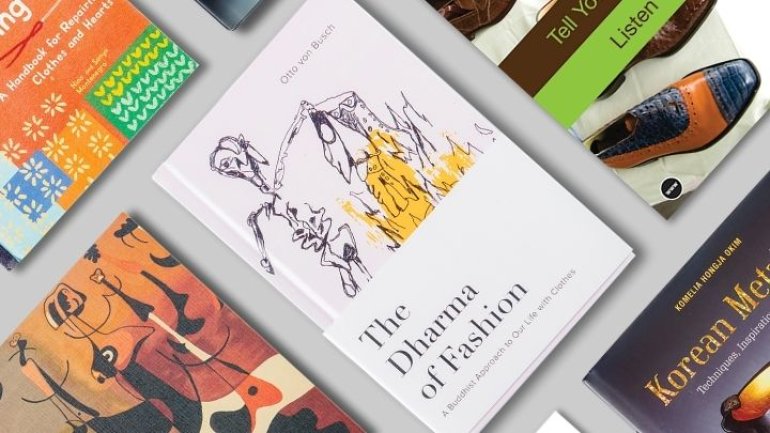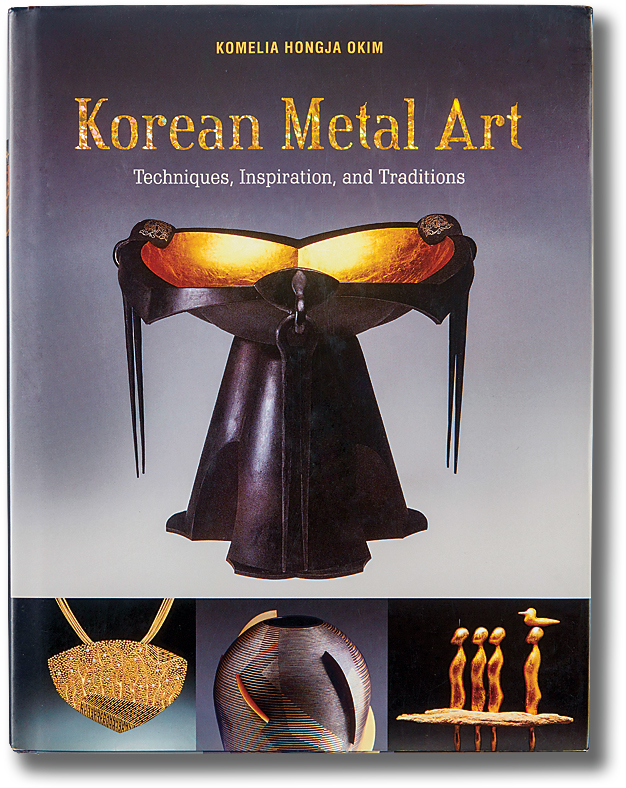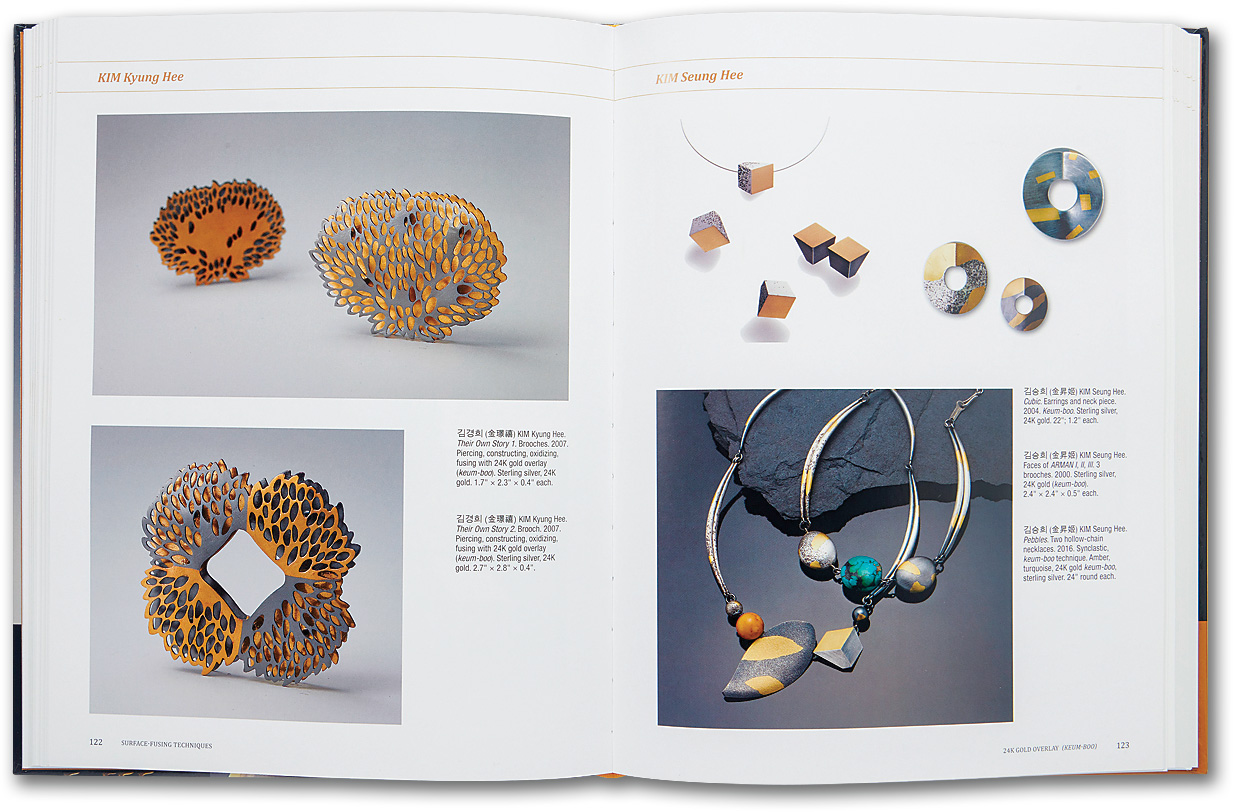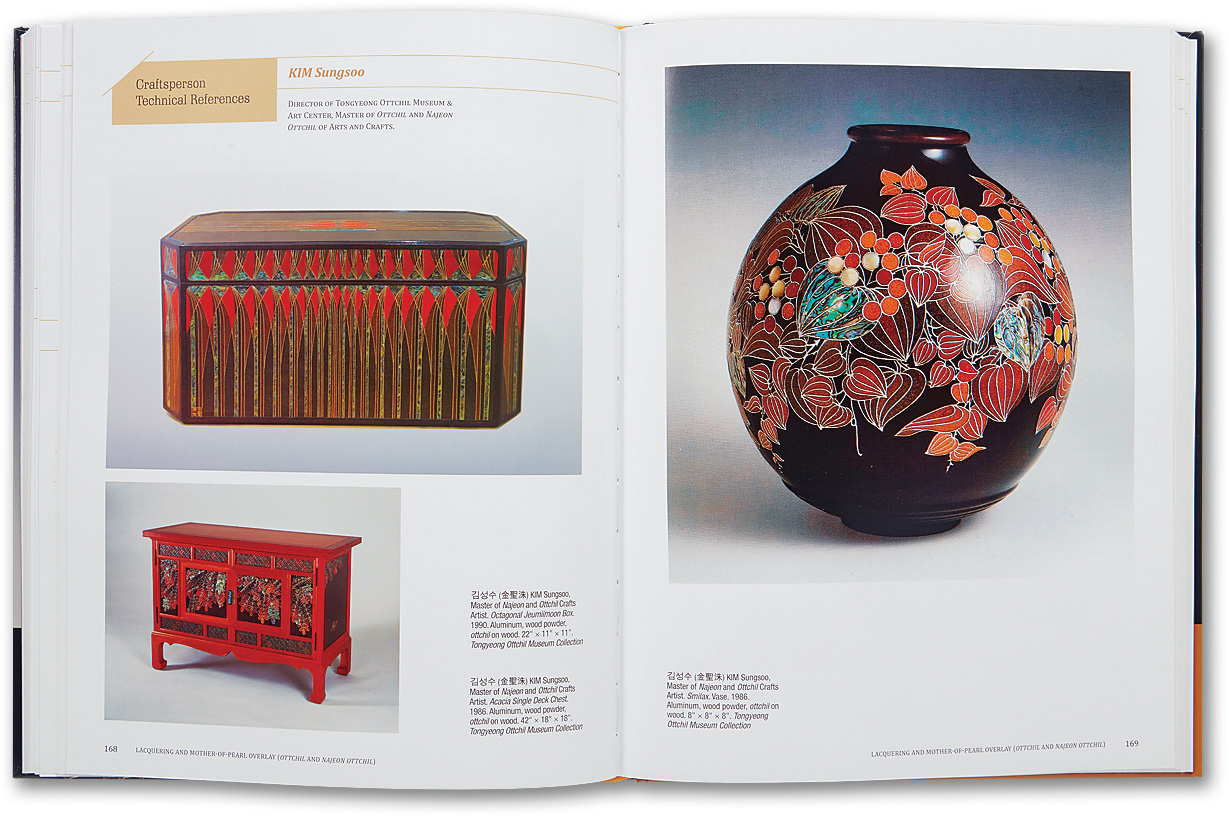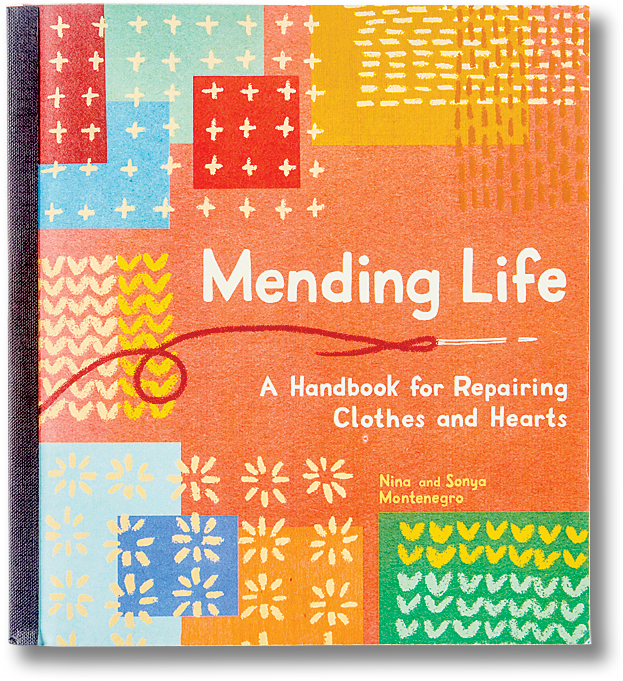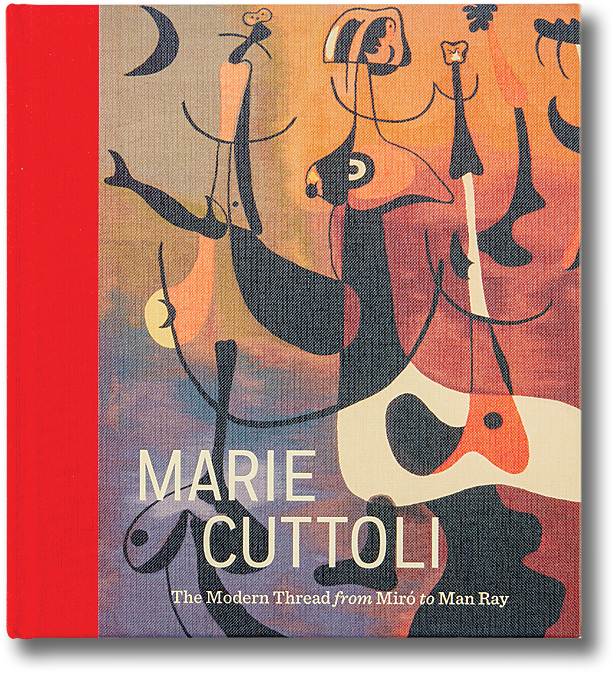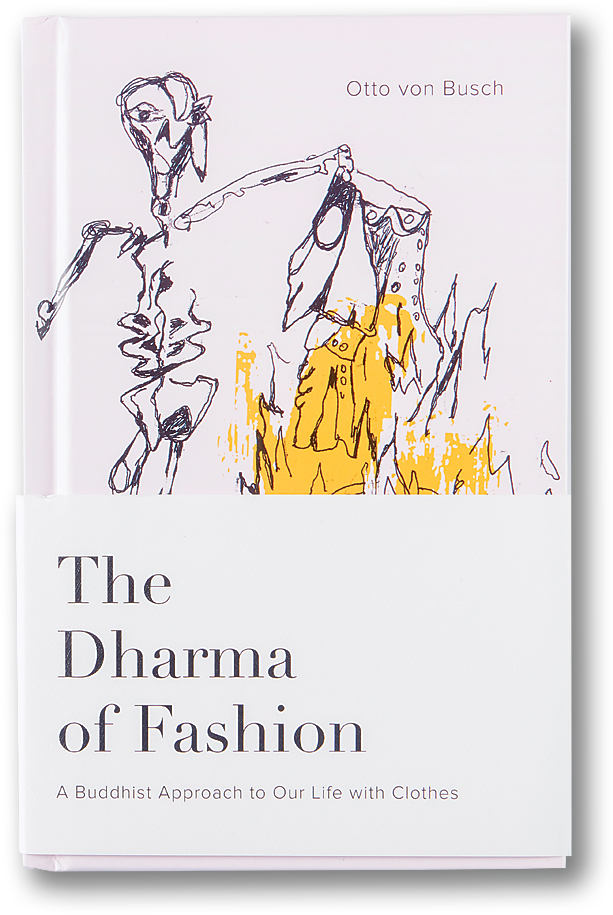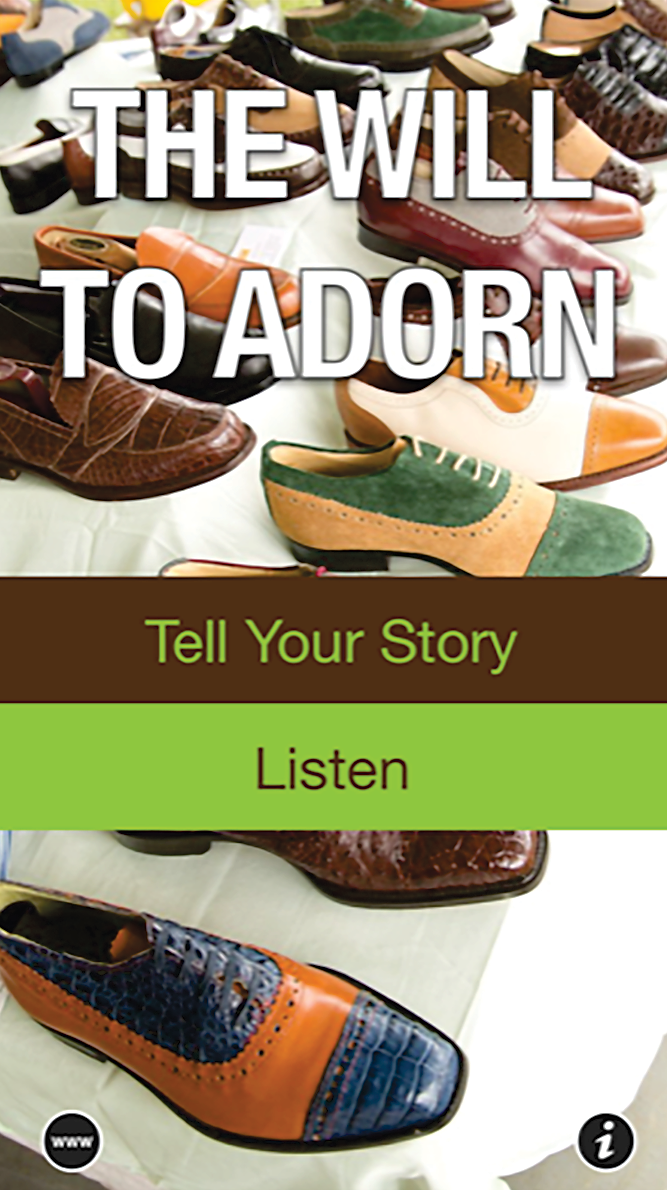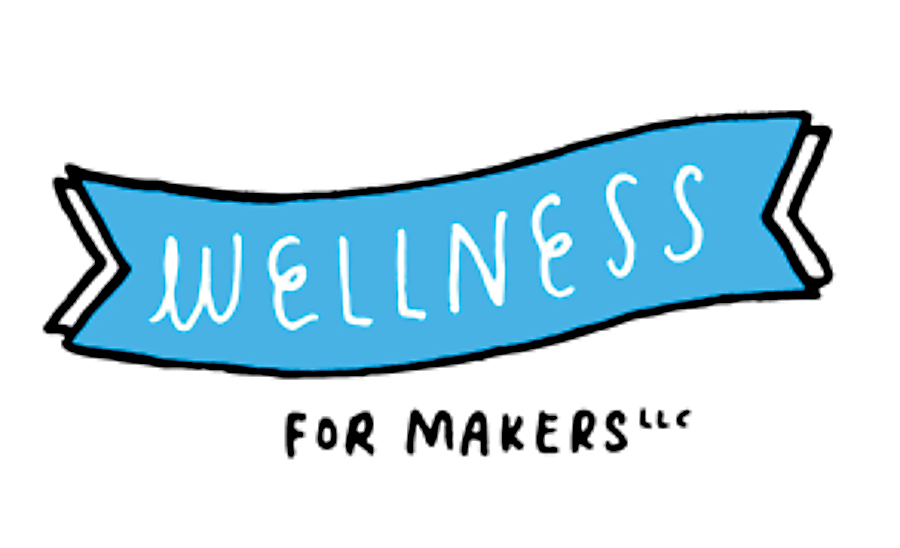From Our Library: Mixed Media
From Our Library: Mixed Media
Refresh your reading/listening list with this content on craft and beauty
Dive deeper into the themes of the Beauty issue of American Craft through these four new craft titles, an app that lets you participate in a cultural research project, and a podcast specifically for makers. All four books are recent additions to the American Craft Council Library's collection, and we're excited to share them with you come time to gather in person again!
Korean Metal Art: Techniques, Inspiration, and Traditions
By Komelia Hongja Okim
Schiffer Publishing, $65
Korean metal-art techniques are similar to those commonly used in North America, but they differ significantly in their designs, patterns, and functions. In her new book, Komelia Hongja Okim, who taught metal art at Montgomery College in Maryland for more than 42 years, introduces Korean metal art to an American audience with edifying essays, luxe pictures, and detailed instructions for 15 different Korean metal-art techniques, including 24k gold overlay on silver (keum-boo or geumbu) and jade nephrite carving and inlay (oak ipsa). Examples of techniques used to create non-Korean imagery, such as Mira Choi Tyson’s brooch Impression of Native American Arrowheads I (in the book’s “Damascene Inlay Technique” section), are even more powerful for their cross-cultural juxtapositions. Spending time with this stunning text is like spending time with a wise professor, who is eager to pass on traditions and inspiration.
Mending Life: A Handbook for Repairing Clothes and Hearts
By Nina and Sonya Montenegro
Sasquatch Books, $24.95
Reading Mending Life: A Handbook for Repairing Clothes and Hearts is as much a spiritual experience as an edifying one. The authors are sisters and self-taught menders who connect the mending of clothes to the mending of hearts, communities, and the environment. “Mending is a part of being alive,” they write on one of the opening pages.
Heartfelt stories of mending, healing, and healing through mending wend their way through the book, as do the distinctive illustrations, adding a charm to the step-by-step instructions for patching, darning, button sewing, sashiko stitching, hemming, and more. A perfect read if you dream of adding new life to old clothes, or if you’re craving the literary equivalent of a warm hug. Pair an afternoon spent reading this book with a hot cup of tea.
Read more about the practice of mending in the Beauty issue in "Beauty After Damage."
Marie Cuttoli: The Modern Thread from Miró to Man Ray
Edited by Cindy Kang
Yale University Press, $45
In the 1930s, art entrepreneur Marie Cuttoli commissioned leading artists, including Joan Miró, Georges Braque, Le Corbusier, Man Ray, and Pablo Picasso, to create designs for woven tapestries. In the process, she affected the discourse of modern art history while reviving the artisan tapestry tradition in France and making it a popular modernist medium.
A companion catalogue for an exhibition of the same name at the Barnes Foundation in Philadelphia, this coffee table book revisits some of modernism’s canonical paintings not as autonomous works of art (as they are often understood) but as textile designs. Sitting down with it is like touring the exhibition with an insightful curator by your side and getting a glimpse into the historical tension between high art and artisanal handwork. A look at Cuttoli’s early career in fashion design and her private label Myrbor expands the book’s focus.
The Dharma of Fashion: A Buddhist Approach to Our Life with Clothes
By Otto von Busch
Schiffer Publishing, $14.99
Clothes are many things: a form of self-expression, a way to signal belonging or difference, and a medium for creating beauty. But clothes, and the fashion trends that inform them, can be complicated. It’s easy for the ego to get hooked into what we wear and how we look, trapping us in loops of worry and distraction.
In The Dharma of Fashion, Otto von Busch, associate professor of integrated design at Parsons School of Design, explores our complicated emotional, psychological, and spiritual relationships with fashion, while offering mindfulness exercises throughout to help us build a new rapport with the clothes we wear. “We search for a feeling of self in the shopping mall, in the feeds of social media, and in the habitual late-night browsing of online fashion outlets,” writes von Busch. “Is there any way to use fashion as a better tool for self-understanding?” Conversations with dharma teacher Josh Korda offer expanded insight to the topic.
The Will to Adorn
iOS App
Smithsonian Institution
“The Will to Adorn: African American Dress and the Aesthetics of Identity” is a cultural research project led by Dr. Diana Baird N’Diaye, senior curator and cultural specialist for the Smithsonian Center for Folklife and Cultural Heritage. The project seeks to understand how African Americans use dress and grooming as expressions of creativity and heritage.
For the project, the Smithsonian is collecting and sharing collaborative data in a variety of ways, including with the Will to Adorn, a free iOS app that invites users to share and listen to short stories about the role clothes play in their lives. Participants muse on questions such as: What’s your inspiration for grooming and dressing? What do your clothes reveal about who you are — or who you aspire to be? What would you never wear, and why not? And more.
Hear more from Dr. Diana Baird N’Diaye in part 2 of our recent American Craft Forum series on Craft Thinking.
Wellness for Makers
Podcast
By Missy Graff Ballone
Making beautiful things can come at a cost for makers, who are susceptible to repetitive stress injuries, aching joints and muscles, and other unique stressors, such as the complexities of running a creative business.
The Wellness for Makers podcast empowers makers to protect their physical and emotional well-being by offering smart strategies for staying healthy. Recent topics range from proper ergonomics for knitting to protecting your creative ideas by understanding trademark and copyright law. The podcast is the brainchild of Missy Graff Ballone, an artist, yoga instructor, and licensed massage therapist, who brings warmth and compassion to every half-hour conversation. If your vocation is making, but your body or mind is aching, let Graff Ballone guide you on the path to optimal wellness, so you can keep doing the creative projects you love – without pain.
Read more about Missy Graff Ballone in "Zen and the Art of Maker Maintenance."
Are craft resources important to you?
Become an American Craft Council member, receive our magazine, and support nonprofit craft publishing. Join a community of like-minded readers who are passionate about making, and help grow the number of lives craft has touched.
